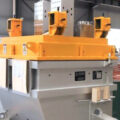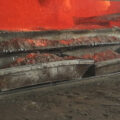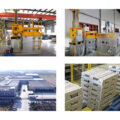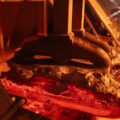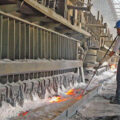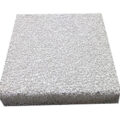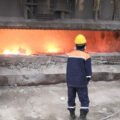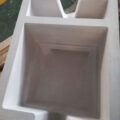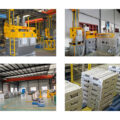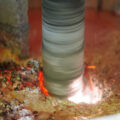When the secondary aluminum alloy melt is cooled, the solid non-metallic impurity is distributed on the grain boundary, which will reduce the mechanical properties of the alloy. In order to provide the performance of the regenerated alloy, impurity removal in the metal melt is important for the next casting.
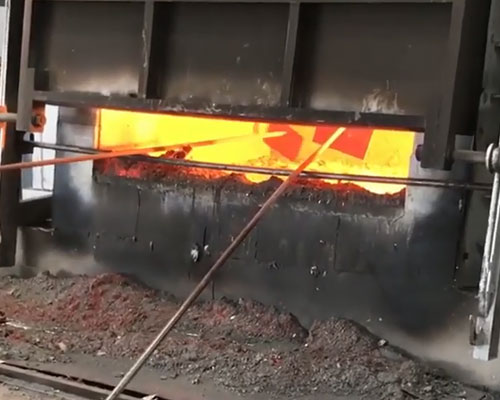
The Method of Impurity Removal in Metal Melt
(1) The filtering method is to pass the aluminum alloy melt through the filtering material to remove impurities. When the alloy melt passes through the filter, the solid particles and the filter are adsorbed.
Ceramic foam filters (CFF) have been widely used for filtering impurities out of molten aluminum in cast houses. With the demand for high-quality aluminum products increasing, ceramic foam filter molten metal filtration has proved an optimum method for improving metal quality.
(2) Gas refining is carried out by injecting inert gas into the slag. When the introduced gas is diffused into the melt, the hydrogen dissolved in the alloy liquid diffuses into the small bubbles of the injected gas. At the same time, it also removes oxides and other insoluble impurities. Just like flotation, the solid inclusions are also adsorbed by small bubbles and then float to the surface of the melt.
The degassing device is an environmentally friendly molten metal treatment system, which performs degassing and slag removal of aluminum alloys. The degassing device uses the impeller principle and a rotor, generates small inert gas bubbles, and mixes them with molten metal. These tiny bubbles are evenly distributed in the molten metal, which maximizes the contact area between the gas and the molten metal. The degassing device brings a higher level of degassing and slag removal effects, and can shorten the processing time.
(3) Salt refining adopts fluxes to remove gas and non-metallic inclusions in the metal melt. They enter the aluminum melt as a flux, they generate aluminum halide gas and escape.
Granular Flux is an environmentally friendly range of fluxes used for the molten metal treatment of aluminum and aluminum alloys. Powder fluxes possess certain disadvantages such as dusting during the application, toxic fume emissions. This causes health hazards to the workers and environmental problems. The powder fluxes also pose a problem of inconsistent efficiency due to the morphology of the powder. To overcome these disadvantages, dust-free granulated fluxes have been developed.

